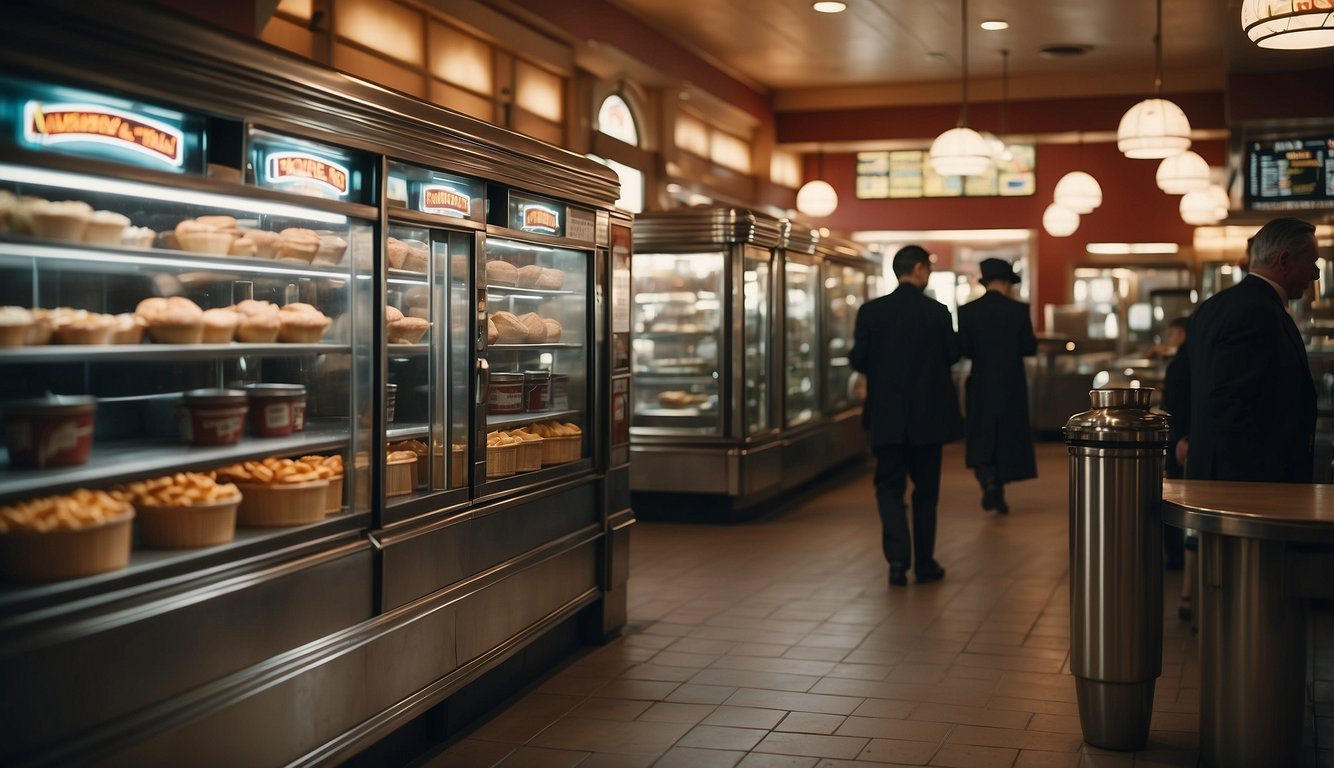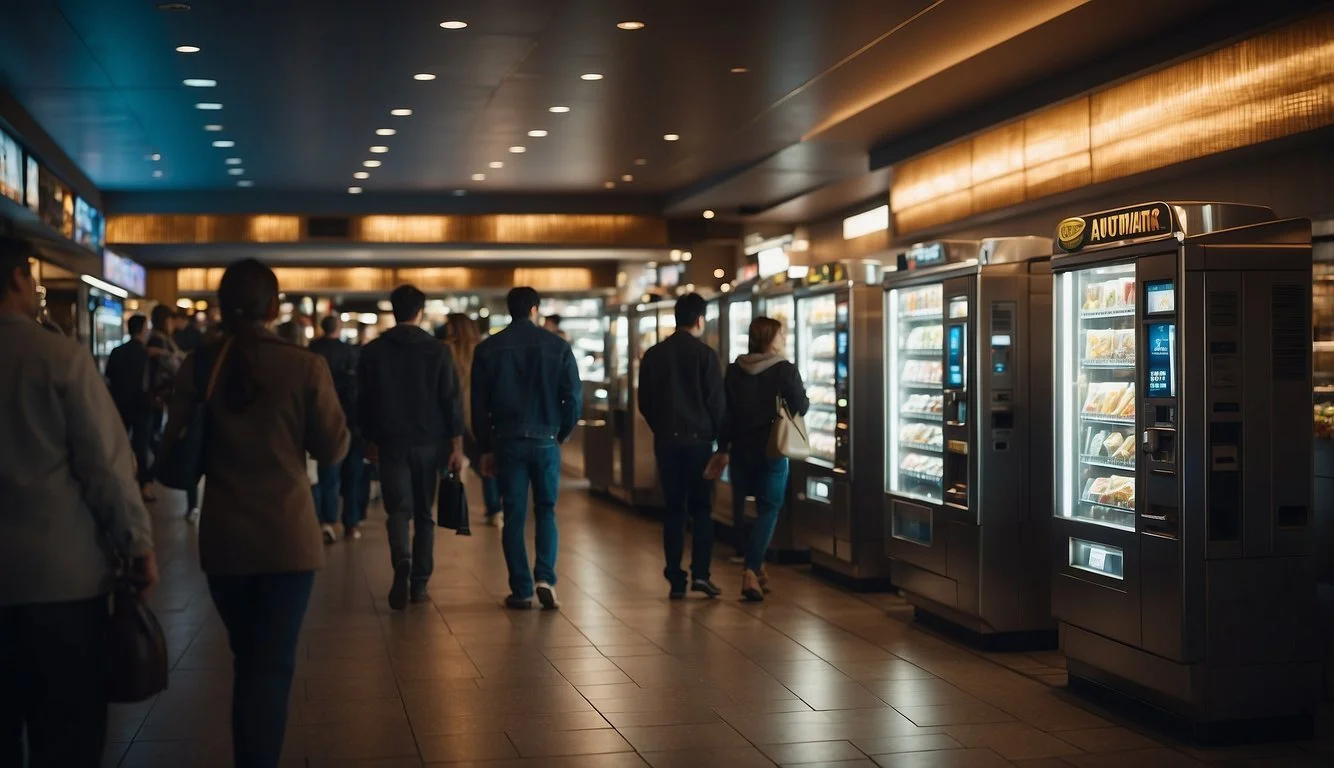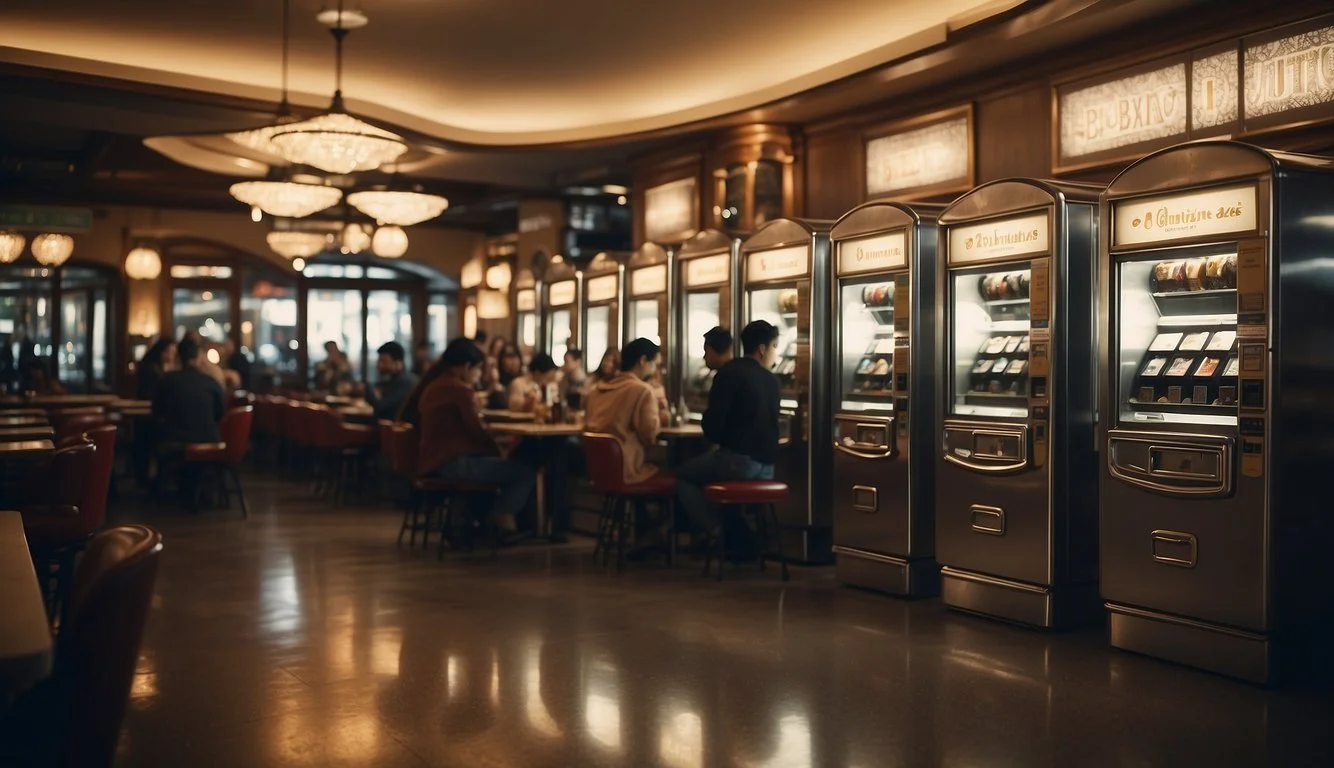Documentary Review: The Automat (2022)
A Nostalgic Dive into Dining History
The Automat (2022) is a compelling documentary that captures more than just the nostalgia of a bygone era. Directed by Lisa Hurwitz, the film explores the once-iconic dining establishments known as Automats, where patrons could purchase meals through vending machine-like windows, offering a unique lens into American social history.
"The Automat" utilizes captivating firsthand accounts and historical context to reveal why these establishments were not only popular during the Great Depression but also indispensable to urban life. Interviews with notable figures and everyday people bring personal experiences to life, making it clear why the Automat holds a special place in many hearts.
With its rich storytelling and keen historical insights, "The Automat" isn't just a trip down memory lane; it highlights significant cultural and economic shifts that contributed to the rise and fall of this unique dining experience. This documentary invites viewers to explore a fascinating piece of Americana, making it a must-watch for history buffs and food enthusiasts alike.
Background of 'The Automat'
The Automat was an iconic American restaurant chain noted for its unique vending machine-style food service and affordability during its peak years. This section highlights its historical significance and the filmmakers' contributions.
Historical Significance
The Automat originated in the early 20th century and gained widespread popularity due to its innovative self-service system. Located primarily in New York City and Philadelphia, Automats were famed for their nickel-priced meals.
Joseph Horn and Frank Hardart founded the Automat, inspired by European vending machine restaurants. The concept provided accessible, high-quality food during economic hardships such as the Great Depression.
Automats symbolized technological advancement and social progress. They became community hubs where people from diverse backgrounds mingled, reflecting the changing social fabric of urban America.
Production and Filmmakers
Directed by Lisa Hurwitz, the documentary sheds light on the rise and decline of the Automat. Hurwitz meticulously compiles archival footage, interviews, and personal stories, painting an affectionate picture of this cultural phenomenon.
Documentary historian Michael Hurwitz contributed significant research, offering historical context. The team's authentic and thorough approach provides viewers a nostalgic window into the past.
The documentary features notable personalities, including Mel Brooks, who share personal anecdotes. The film's runtime is 1 hour and 19 minutes, making it concise yet informative.
Filmmakers' dedication to preserving and showcasing this piece of Americana ensures that the legacy of the Automat remains celebrated and remembered.
Synopsis of 'The Automat'
"The Automat" documentary, directed by Lisa Hurwitz, provides a nostalgic and historical look at the famous Automat restaurants, exploring their rise, popularity, and eventual decline. It highlights significant moments, the cultural impact, and the ultimate reasons for their downfall.
Plot Overview
"The Automat" explores the inception and journey of Automat restaurants, a dining concept pioneered in the early 20th century. Inspired by the dumbwaiter Automat Restaurants of Berlin, Joseph Horn and Frank Hardart introduced this concept to the United States.
The film portrays how these eateries became a culinary staple during the Depression era, providing affordable meals through coin-operated dispensers. A defining moment shares Edwin Daly's recollection of his father's struggle with increasing a cup of coffee's price from a nickel to a dime.
Through interviews and archival footage, viewers see how societal changes and economic shifts eventually led to the decline of these beloved establishments by the 1960s.
Key Themes and Messages
"The Automat" delves into themes of nostalgia, innovation, and social change. The documentary underscores the innovative spirit of its founders, who revolutionized dining through efficiency and affordability. It highlights the sense of community and accessibility that these restaurants provided, particularly during challenging economic times.
The film also addresses the impact of broader societal shifts, such as evolving consumer habits and economic pressures, on the decline of the Automat. It emphasizes how crucial decisions, like price changes, reflected broader social and economic transformations.
Through these themes, the documentary paints a vivid picture of a bygone era, illustrating both the rise and fall of a once revolutionary dining concept.
Cinematography and Visual Elements
"The Automat" documentary, directed by Lisa Hurwitz, effectively uses visual elements to evoke nostalgia and provide historical context. The film features archival footage of the Automat restaurants, which visually transports viewers back to their heyday.
The documentary employs a mix of black-and-white and color footage. This combination highlights the contrast between the past and the present, adding depth to the narrative.
Close-up shots of the Automat's unique food compartments and machines showcase the intricate design and functionality. These details underscore the simplicity and efficiency that made the Automats iconic.
Old photographs and promotional materials are interspersed throughout the film. These visuals help to paint a vivid picture of the cultural and social significance of the Automat in American history.
Interviews with former patrons and employees are visually framed to capture genuine emotions and memories. The backgrounds often include elements reminiscent of the Automat's interior, further immersing the audience.
Animations and graphic overlays are used to explain complex mechanisms and trends. This creative approach makes historical information more engaging and easier to understand.
The documentary carefully balances its use of visual elements. Utilizing historical footage, animations, and interviews, "The Automat" not only informs but also captivates its audience.
Critical Analysis
"The Automat" (2022) examines the rise and fall of Horn & Hardart automats. The documentary not only portrays nostalgic transformation but also explores economic impacts and social changes.
Expert Opinions
Film critics have praised "The Automat" for its insightful depiction of a bygone era. Roger Ebert's review highlights the documentary's grasp on social changes, detailing how shifts in society eventually led to the demise of automats. Lisa Hurwitz's direction has been mentioned for capturing the essence of nostalgia while providing a factual recount of historical events. Industry experts agree that the film successfully balances emotional storytelling with factual accuracy.
Public Reception
Viewers have responded positively, expressing affection for the way the documentary rekindles memories of the automats. Audience reviews often mention the emotional connection they feel with the subject matter. Ticket sales from various independent platforms also indicate a strong reception. Social media discussions reveal a shared appreciation for the accessible format that brings history to life, making it appealing to both older and younger generations.
Cultural Impact
"The Automat" documentary highlights significant shifts in dining culture and evokes a sense of nostalgia for a bygone era that centered around convenience and community.
Influence on Dining Culture
The Automat revolutionized the food service industry by introducing a self-service model that combined efficiency with affordability. This innovation allowed customers to access a variety of dishes from coin-operated compartments, significantly reducing the need for waitstaff. It democratized dining, making it accessible to a broader segment of the population during its peak years from the early 20th century through the mid-20th century.
The concept was inspired by similar systems in Berlin, which speaks to its international roots and influence. In an era where fast food was not yet prevalent, Automats offered a quick, yet wholesome meal option. They were particularly popular during the Great Depression, offering a cost-effective dining solution where a nickel could buy a cup of coffee or a slice of pie.
Nostalgia and Revival
The documentary taps into a deep well of nostalgia, particularly for those who experienced the heyday of the Automat firsthand. It serves as a historical record, capturing the essence of an era where dining was an event, and the Automat was a central fixture in daily life.
The Automat also symbolizes a simpler time when the communal dining experience was a daily ritual for many. Aspects of this bygone era continue to capture the public imagination, prompting periods of renewed interest and even revival attempts in various forms, such as through pop-up events and modern interpretations in contemporary eateries. This enduring allure underscores the lasting cultural resonance of the Automat, long after its decline.
Interviews and Anecdotes
The documentary "The Automat" (2022) dives deep into the lives of those who experienced the iconic eatery firsthand. Notable interviews include conversations with the late Colin Powell, who recalls his family's limited dining experiences and their visits to the Automat. His reflections add a poignant touch, highlighting the cultural impact of these establishments.
Edwin Daly shares compelling family stories, including an account of his father's near breakdown over raising the price of coffee from one nickel to two. Episodes like these show the emotional and economic stresses felt by those behind the scenes.
Rich with anecdotes, the film features guests from diverse backgrounds, such as school kids, businessmen, artists, and the homeless. Archival footage and photographs add depth, showing the Automat's broad appeal across different social strata.
Lisa Hurwitz, the director, employs these interviews to paint a broader picture of the Automat's historical and cultural significance. The voices of those who frequented the Automat, combined with rich visual history, create a vivid portrayal of this once-beloved institution.
Comparison with Other Documentaries
Documentaries often aim to recount historical events or explore societal changes, and "The Automat" distinctly highlights a unique piece of American culinary history.
The Automat is a detailed documentary directed by Lisa Hurwitz. It differs from many other historical documentaries in its intimate focus on a specific establishment rather than broader events.
Unlike documentaries such as Ken Burns' The Vietnam War, which covers comprehensive historical conflicts, The Automat narrows in on a single institution and the social shifts it mirrored. This focus offers a deep dive into the life and times surrounding the Automat.
Moreover, the film’s blend of nostalgia and historical examination can be compared to other documentaries like Won’t You Be My Neighbor?. Both films use personal anecdotes and archival footage to evoke strong emotional connections with their subject matter, though The Automat emphasizes a specific dining experience over an individual's life.
In terms of presentation, The Automat adopts a more straightforward narrative style compared to documentaries like Fahrenheit 9/11. While Fahrenheit 9/11 employs a political critique through a provocative lens, The Automat remains more neutral and nostalgic.
Table of Comparison
Feature The Automat The Vietnam War Won't You Be My Neighbor? Fahrenheit 9/11 Focus American Diner Vietnam War Fred Rogers U.S. Politics Post-9/11 Time Period Covered 1902-1991 1955-1975 Late 20th Century Early 21st Century Narrative Style Nostalgic, Intimate Comprehensive, Historical Personal, Emotional Provocative, Political
The Automat stands out for its affectionate portrayal of a beloved institution, capturing both historical significance and personal memories. The documentary's blend of factual recounting and emotional reflections invites comparisons with both deeply historical and warmly nostalgic films, albeit with a unique tone.
Conclusion and Final Thoughts
"The Automat" (2022) is a documentary directed by Lisa Hurwitz that captures the nostalgia of the famed Automat restaurants. These establishments were iconic symbols of urban life, especially on the East Coast of the United States.
The film features interviews with notable figures like Mel Brooks, Ruth Bader Ginsburg, and Colin Powell. Their recollections add depth to the historical narrative of the Automat's impact.
The documentary highlights the social, economic, and cultural factors that contributed to the rise and fall of the Automat. This comprehensive approach provides a well-rounded perspective.
Visually, the film employs archival footage, enhancing its storytelling. The imagery of the rusted and forgotten Automat fronts evokes a sense of lost heritage.
Musical accompaniment by Hummie Mann accentuates the film's nostalgic feel. The score underscores the emotional weight of the subject, making for a compelling viewing experience.
"The Automat" is more than just a historical account. It serves as a poignant reminder of a unique era in American dining history. The film effectively balances fond memories with critical analysis.
For those interested in American cultural history or industrial food service, "The Automat" offers valuable insights. It is recommended viewing for anyone curious about this once-popular dining phenomenon.





